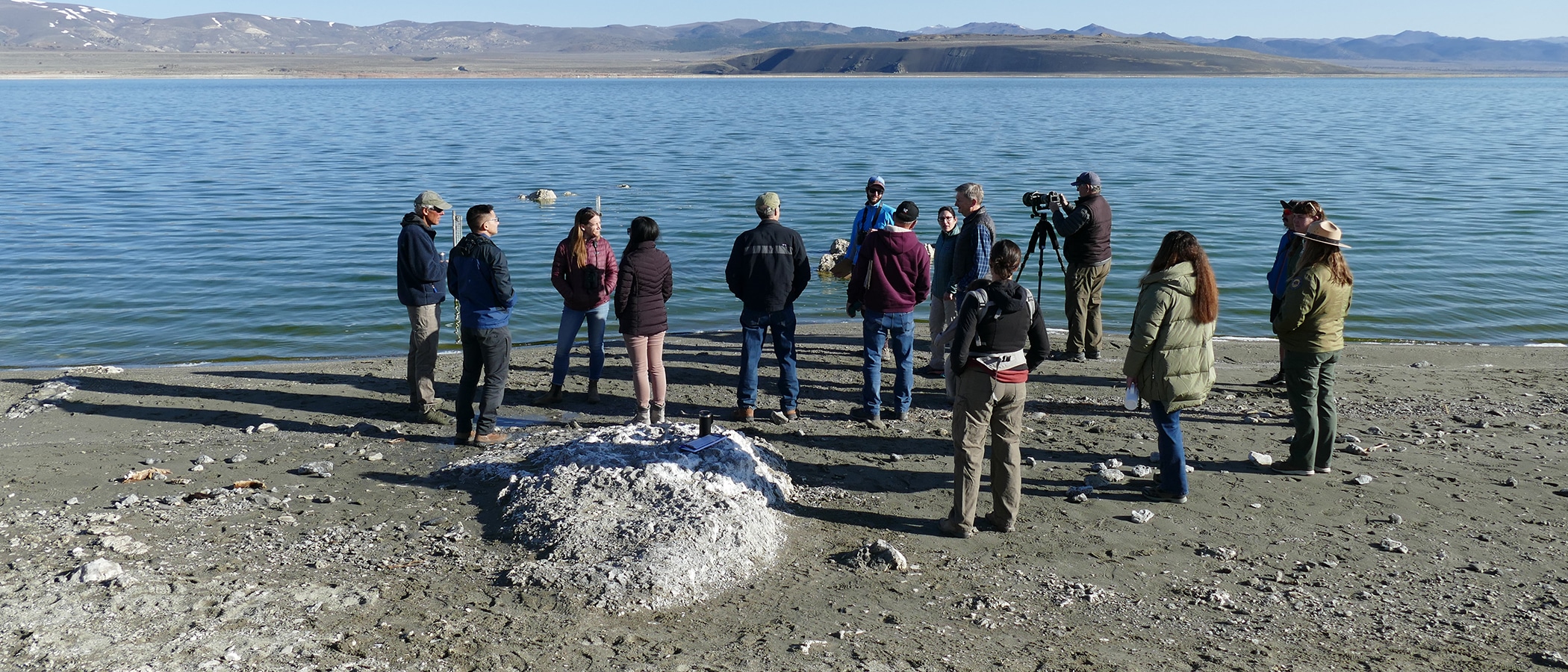
Reduced diversions in the year ahead
This morning, April 1, Mono Lake Committee staff and Los Angeles Department of Water & Power (DWP) staff cooperatively read the level of Mono Lake. The official reading was 6379.92 feet above sea level, a mere inch below the 6380.00 threshold set forth in DWP’s licenses to divert water from the tributary streams.
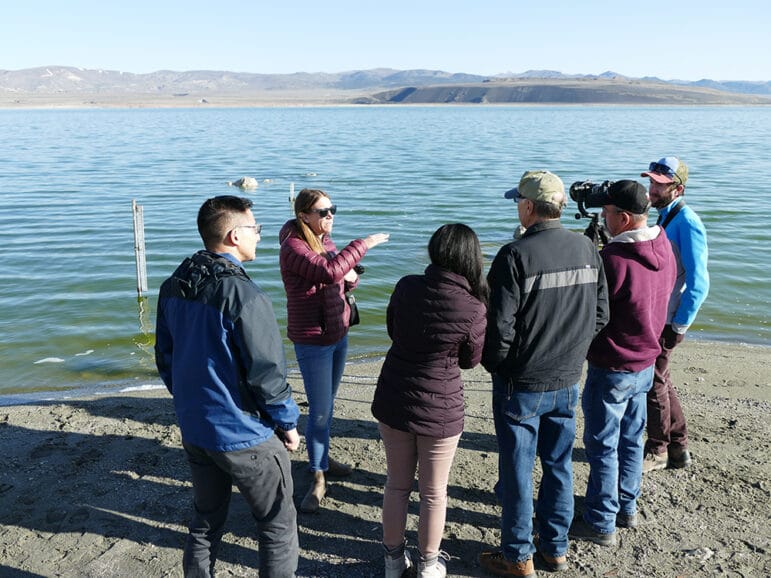
This low surface elevation triggers limitations designed to slow further decline of the lake from the ecologically perilous current level. For the next twelve months, DWP diversions cannot exceed 4,500 acre-feet of water, a significant reduction from the 16,000 acre-feet allowed in the prior twelve months.
This is the second time in the last seven years that the lake has fallen below the 6380-foot threshold, which should have been surpassed decades ago. It has been almost 30 years since the California State Water Resources Control Board modified DWP’s water exports with the express purpose of protecting Mono Lake’s unique habitats and complying with clean air health standards by raising Mono Lake to a level 12 feet higher than today’s reading.
The State Water Board expected the lake to rise to that sustainable level by 2014, however today the lake has risen only 31% of that distance. As a result, the State Water Board plans to hold a future hearing to consider modification of stream diversion allocations.
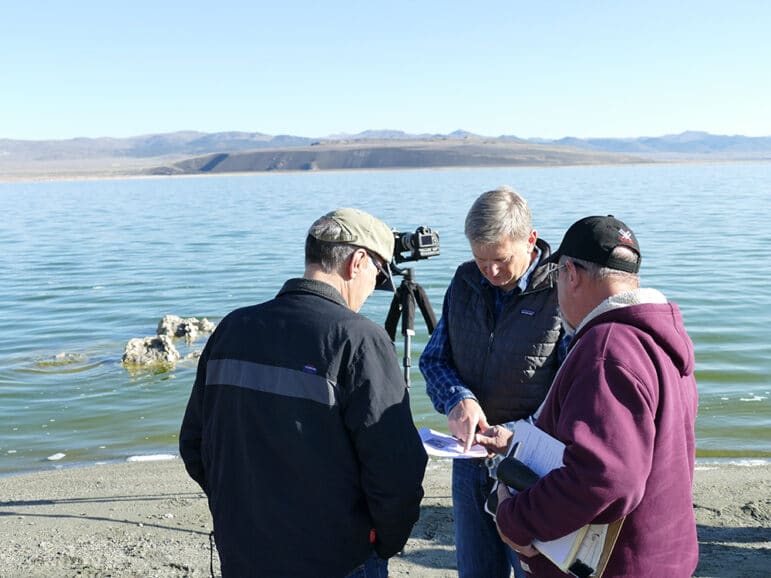
Joining Mono Lake Committee and DWP staff for the lake level reading were representatives from the Kootzaduka’a Tribe, Great Basin Unified Air Pollution Control District, California Trout, Mono Lake Tufa State Natural Reserve, and the Mono Basin National Forest Scenic Area. From healthy brine shrimp to clean air to Tribal cultural values—the plan to deliver a higher, healthier, and restored Mono Lake matters for the Public Trust and the future health of Mono Lake. Today’s gathering illustrates that many are closely watching.
The stream diversion limitations will not affect groundwater, and DWP’s export of groundwater from the Mono Basin in the Mono Craters Tunnel will continue unchanged, separately providing more than 5,000 acre-feet of water to the Los Angeles Aqueduct.
Drought news is growing louder in California, and Los Angeles continues to thrive through wise strategies of conservation and development of local supply. DWP and the people of Los Angeles have achieved astonishing feats of urban water efficiencies—achievements that were merely dreamed of in 1994 when the State Water Board balanced the Public Trust values at Mono Lake with the real water needs of Los Angeles.
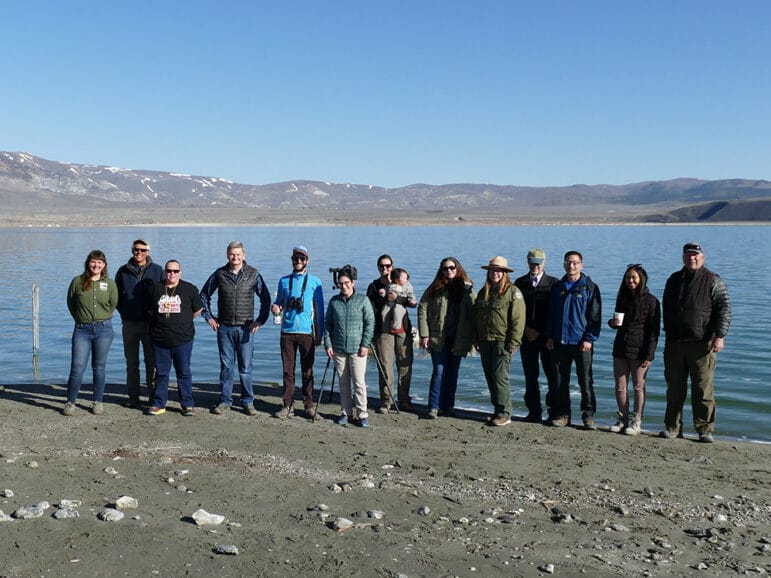
Mono Basin stream diversions make up only a few percentage points of Los Angeles’ total water use. For Mono Lake, that little bit of water, tallied up over decades, is the difference between an ecosystem struggling or an ecosystem on the rebound, the difference between toxic dust storms and clean air, the difference between 6380’ and a lake approaching its mandated 6392’ sustainable management level.
The relationship between Los Angeles and Mono Lake, connected by 335 miles of aqueduct infrastructure, remains a work in progress. Los Angeles is adapting, reinventing its water legacy, reducing its water use to the lowest level in 50 years despite gaining more than a million more people. The city continues to push forward, innovate, and invest in reliable local water supply solutions, providing a sustainable long term urban supply and creating the capacity to repair the damage done by decades of excessive water diversions at Mono Lake in the past.
Twenty eight April firsts have passed since the State Water Board decision. Mono Lake remains chronically and artificially low. To mirror the water successes in Los Angeles, Mono Lake should be thriving at its mandated higher and healthy level. The plan to accomplish that rise is apparently due for some adapting and course correcting of its own.
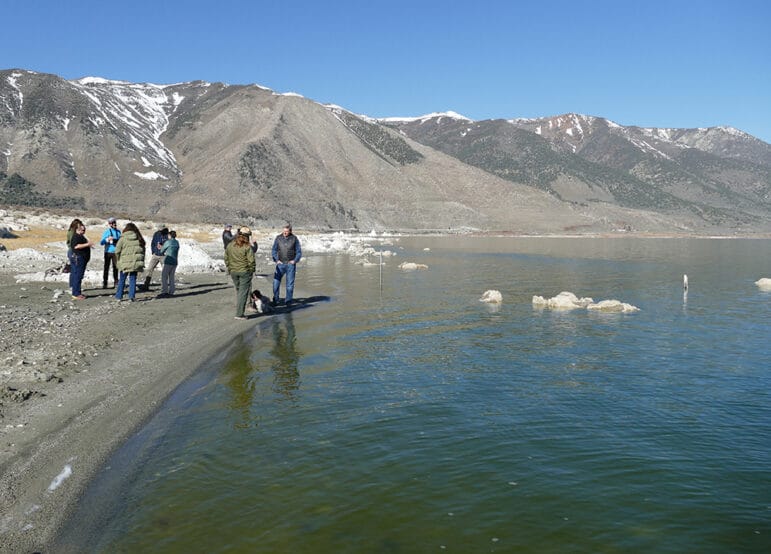
Top photo by Elin Ljung.
